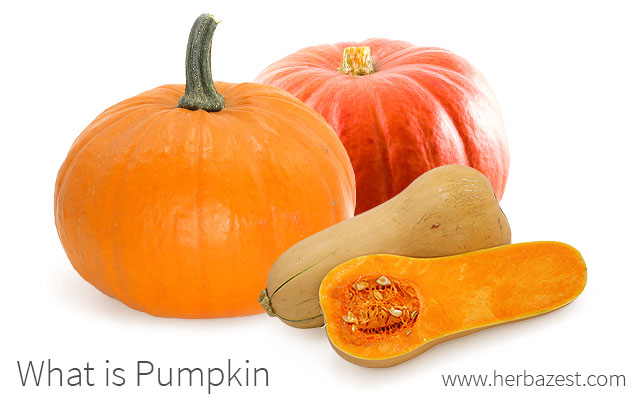The pumpkin is a member of the Cucurbitaceae family with rampantly-crawling vines and deeply-lobed leaves. Pumpkins produce an edible fruit whose flesh may be either bitter or sweet, depending on the maturity of the fruit. They have large, flat seeds and a rigid outer skin. To better understand what pumpkins are, it may be helpful to study their history, origin, and uses. Keep reading to learn all about pumpkins and the diverse applications of this majestic herb.
About Pumpkin's Origins
The oldest archeological evidence of the domesticated pumpkin date back more than 7,000 years ago, and were found in parts of northwestern Mexico. Though its exact origin remains uncertain, somewhere in North America or Central America is most likely.
The pumpkin is thought to have been transported to Europe from the New World during the colonial era of exploration. Pumpkins were widely disseminated over time through trade, commerce, and other interactions with different continents. Today, the pumpkin plant is harvested on six different continents, wherever there are warm periods of summer. There are now hundreds of different pumpkin species and subspecies.
Traditional Uses of Pumpkin
Pumpkin has been traditionally applied as a treatment for conditions related to the digestive system and reproductive system. It has also been used topically to treat common skin conditions, like wounds and burns. In addition to these benefits, pumpkins also held many important culinary uses for ancient civilizations, who consumed their seeds as snacks and roasted long strips of pumpkin for eating. Aside from consumption, dried strips of pumpkin were sometimes used for weaving intricate mats.
About the Pumpkin Plant
Experts and botanists define pumpkin, or Cucurbita pepo, as part of the gourd or Cucurbitaceae family - a large family of herbaceous plants with nearly 1,000 species, which produce large, fleshy fruits. Cucumbers, squashes, and melons all belong to this family.
Pumpkin flowers are yellow and funnel-shaped, and while pumpkin fruits are generally bright orange, they may come in a variety of different colors, sizes, and shapes. Cucurbita pepo has three recognized subspecies: subsp. fraternal, subsp. pepo, and subsp. texana. Countless varieties and cultivars of these subspecies exist - some natural, others manmade.
Pumpkin Names
Pumpkin is derived from the Greek word pepon, which means large melon. The word was later adapted by the French as pompon, which the English changed to pumpion. In the early colonies of the New World, the word evolved even further when American settlers started pronouncing it pumpkin.
In the English language, what pumpkins are informally referred to has a lot to do with their size, shape, and appearance.
The thing about pumpkin to remember is that it is a very unique kind of plant that may be considered a squash or gourd.
Pumpkin Nowadays
The inside of a pumpkin is commonly used in a number of beverages, desserts, and savory dishes, while the flowers and leaves, for their part, are also edible. In the U.S., some 80% of pumpkins are available during the month of October, as consumers prepare for Halloween jack-o-lanterns and other pumpkin-themed fall products.
In recent years, though, many scientific studies and tests have been performed with the purpose of discovering new information about what pumpkin does and the potential benefits of pumpkins for humans.
Pumpkin's uses are more than just culinary. Recent studies have helped to shed light on the potential pumpkin health benefits, highlighting the presence of proteins, vitamins, and other nutrients in pumpkin and its various parts, which support and protect the immune system and cardiovascular system.
What is a pumpkin is no easy question to answer. In ancient times, pumpkins were an important source of food, medicine, and skincare for many cultures. Today, they have become wildly popular throughout many parts of the world, and they are still used for a variety of purposes: whether as a powerful medicinal plant, culinary ingredient, or ornamental treasure.
Sources
- Theoretical and Applied Genetics, Genetic relationships and evolution in Cucurbita pepo (pumpkin, squash, gourd) as revealed by simple sequence repeat polymorphisms, 2012
- University of California, Cucurbitaceae - Fruits for peons, pilgrims, and pharoahs
- University of Illinois, Extension Office, Pumpkins and More
- USDA Plants Database, Cucurbita pepo L. var. pepo field pumpkin
- Power Foods, pp. 25, 57, 358, 371
- Kew Royal Botanic Gardens, Cucurbita pepo (pumpkin)




